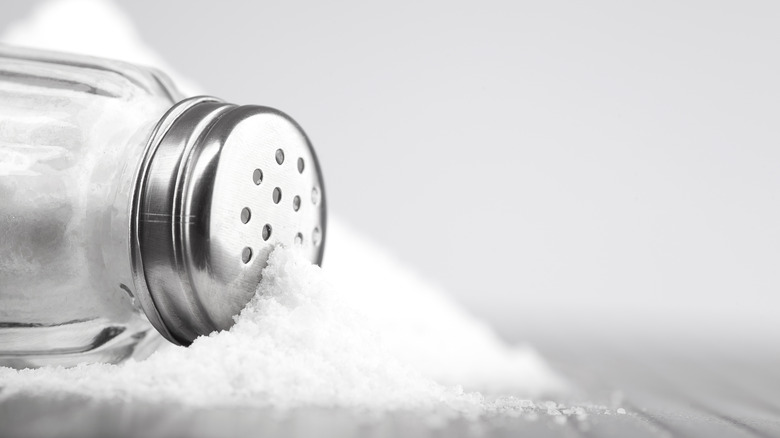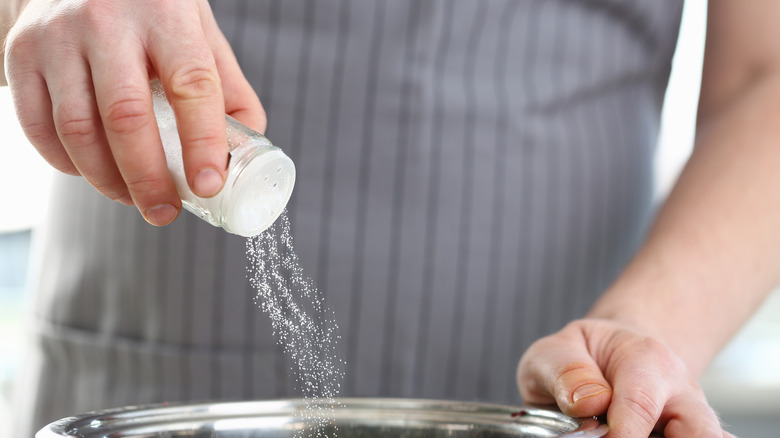Is There A Difference Between Salt And Sodium?
Salt is one of the most essential elements in cooking. It's almost always necessary, even when you think it's not — such as when baking a sweet dessert. Salt enhances the flavors around it; when something tastes bland, it's often because it's under-seasoned.
With that said, you might have heard your doctor mention a little thing called sodium. It's also a word found on nutrition labels, and it's something we don't always pay much attention to. Sodium, from a medical standpoint, is fine in small doses. However, once you start consuming far more than is necessary, it can lead to health problems, including heart disease.
The thing is, salt and sodium go hand-in-hand. While they aren't exactly the same, salt contains sodium, meaning that if you're eating salt, you're eating sodium. And as much as you might love to bring out the flavors of a good dish with plenty of salt, it can harm your health in the long run.
Salt versus sodium
Although we often say "salt" when referring to a food's sodium content, the two terms have different meanings.
According to the Food and Drug Administration, salt is a "crystal-like compound that is abundant in nature." However, it's known scientifically as sodium chloride, meaning it contains both of those elements. Sodium, on the other hand, is just a singular mineral that is found within salt crystals. In simpler terms, all salt contains sodium, but it's not salt's only element.
There are plenty of different types of salt, with table salt being one of the most common; it's usually the salt you see in shakers on your restaurant's table and is less expensive than other forms. Plus, it often contains iodine, which is an element that helps regulate the thyroid. Other types of salt exist as well, such as kosher and sea salt. The main difference between the three is how they're made, though none contain more sodium than the others.
How much sodium is too much?
Now that you know sodium is found in salt, it's important to understand how much the human body needs; overindulging could lead to heart health problems. It might be tasty, but salt is only necessary in small doses.
The American Heart Association says the ideal daily sodium intake is around 1,500 milligrams. However, the average American consumes roughly 3,400 milligrams daily. Because the majority of Americans eat so much salt, the AHA has revised its sodium requirements, with a goal of no more than 2,300 milligrams per day.
How does something like table salt cause heart disease? It comes down to sodium's impact on the body. Too much sodium makes the body retain fluid, and when that fluid builds up around our heart and lungs, the heart then has to work harder to efficiently pump blood. As a result, our blood pressure goes higher over time, and high blood pressure is a major cause of heart attack and stroke. One of the best ways to prevent heart disease is to stick to a low-sodium diet.


